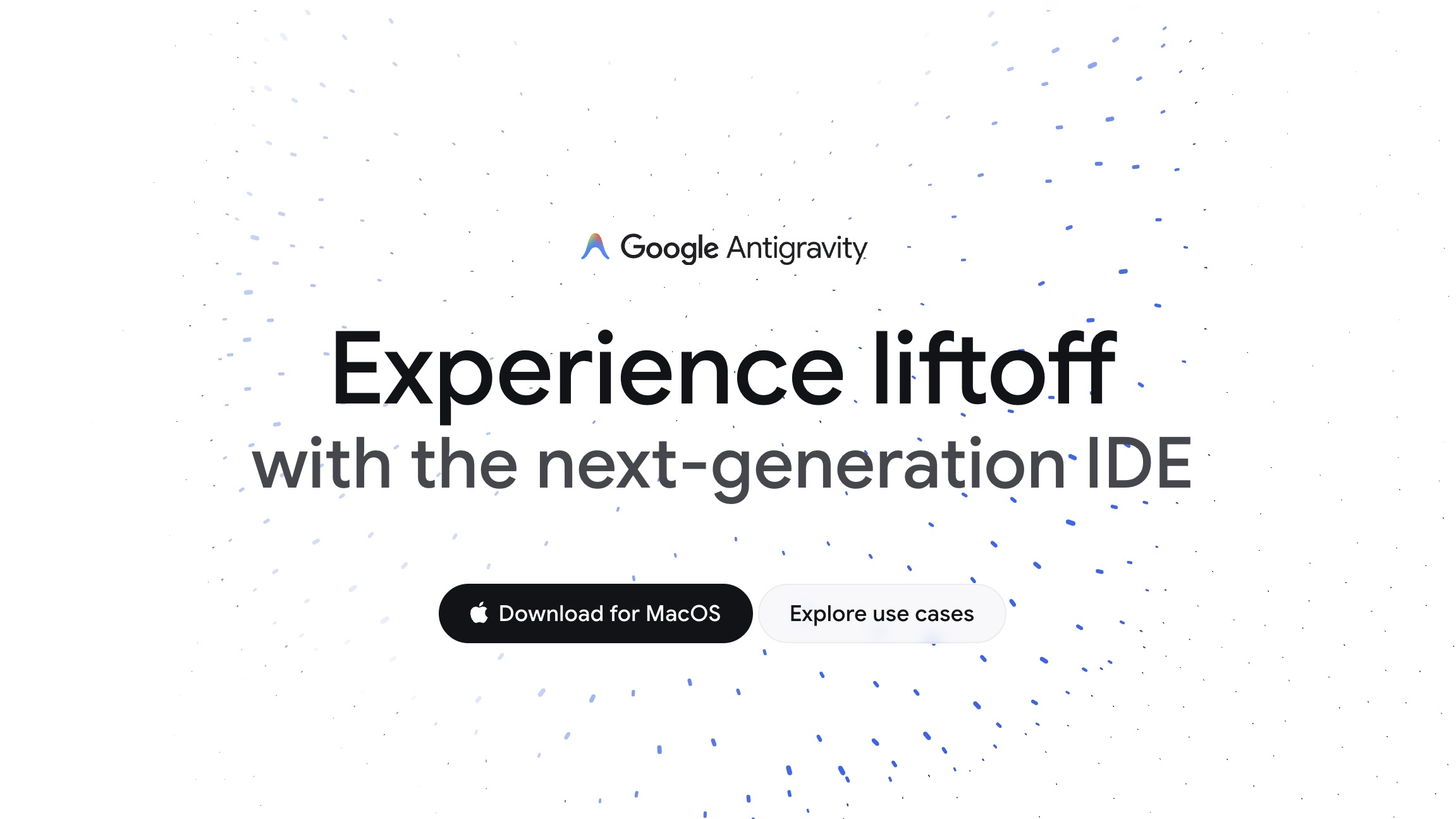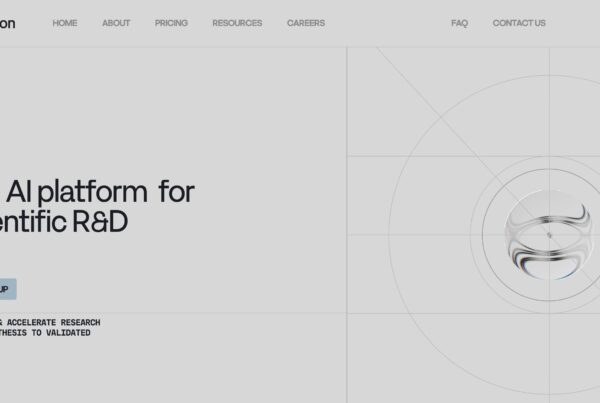Google Antigravity was officially introduced as the latest breakthrough in the field of artificial intelligence-based software development. This platform is not just an ordinary coding aid tool, but a comprehensive work environment specifically designed to build, manage, and orchestrate AI agents capable of working autonomously. The presence of this platform marks a paradigm shift from manual line-by-line coding to goal-oriented intelligent system management. This developer now has access to more advanced tools to face the complexities of future technology.
This launch attracted great attention from the global technology community due to its unique approach. Google not only offers a code editor but also an ecosystem where AI agents become the main workforce. With the ability to perform parallel tasks and integrate the latest large language models, this platform promises unprecedented efficiency. This is a giant technological company's strategic move to dominate the software development market that is increasingly reliant on high-level automation.
The Software Development Revolution Through Google Antigravity
The technology industry is currently witnessing a radical transformation in how applications are built and maintained. The presence of this new tool addresses the need for a system capable of handling complex business logic without burdening developers with repetitive tasks. This platform is designed to be a "home" for intelligent agents that can be commanded to complete specific missions.
In this context, the role of a developer shifts from merely writing code to being a system architect. They no longer have to constantly think about micro syntax, but instead focus on orchestrating agent workflows. This development environment provides the necessary infrastructure for agents to collaborate, share context, and execute commands accurately in real-time.
Goal-Based Working Mechanism in Google Antigravity
The fundamental difference offered by Google Antigravity is a goal-oriented approach or task-orientedIn a traditional Integrated Development Environment (IDE), developers write small functions that are then assembled into a single application. However, on this platform, the main work unit is the agent who is given high-level instructions to achieve specific results. These agents have limited autonomy to determine the best course of action in solving problems, reducing cognitive load on humans.
In addition, orchestration capability becomes a highly emphasized key feature. Developers can set multiple agents to work simultaneously on different parts of the project. For example, one agent can be assigned to design the user interface, while another agent optimizes the database, and a third agent writes technical documentation. All these processes happen in one workspace Integrated, enabling seamless data synchronization between agents. This creates a much more dynamic workflow compared to conventional linear methods.
This flexibility is also supported by the system's ability to understand the overall project context. Agents do not work in blind isolation; they understand inter-module dependencies and can adjust their output based on changes made by other agents. This creates a synergistic effect where the total system productivity far exceeds the sum of individual agent productivity. For the development team, this means that the product release cycle can become much faster with a lower rate of human error.
Deep Integration of Gemini 3 Pro Model
The main strength behind this platform's intelligence lies in the use of the Gemini 3 Pro model as its core brain. This model is known for its multimodal capabilities and reasoning.reasoning) that is very advanced, surpassing the capabilities of previous generation language models. With this integration, agents within the platform not only process text but also understand diagrams, visual code structures, and even audio input if necessary. This opens up opportunities for new types of applications that were previously difficult to build with conventional tools.
Ability reasoning What Gemini 3 Pro possesses allows agents to solve ambiguous problems. When given less specific instructions, the agent can make logical inferences to fill in the gaps of information or ask clarification questions to the developer. This is very crucial in modern software development where requirements often change midway. The agent supported by Gemini 3 Pro can adapt to these changes without needing to be reprogrammed from scratch.
Furthermore, this integration ensures that the code generated or actions taken by the agent meet high-quality standards. This model has been trained with a very large code repository and industry best practices, so the solutions offered tend to be efficient, secure, and easy to maintain. Developers can trust agents to handle critical tasks, knowing that there is a world-class reasoning engine validating every step taken.
Featured Features and Platform Availability
In addition to the revolutionary concept, technical aspects and platform availability become the main considerations for IT professionals. Google ensures that this tool is accessible to a wide spectrum of developers without overly strict hardware restrictions. This distribution strategy demonstrates Google's seriousness in making this tool the new industry standard.
Focus on accessibility and performance is clearly visible from the operating system compatibility offered from day one. Developers are not forced to switch ecosystems just to experience this future technology. This cross-platform support also facilitates collaboration among heterogeneous teams, where team members may use different devices but still need to work within the same project environment.
Cross-Platform Support for Maximum Flexibility
Google has confirmed that Google Antigravity Available in a public preview version for the three main operating systems: MacOS, Windows, and Linux. The decision to launch full support on these three platforms simultaneously is a highly appreciated step by the community. open source and the company enterpriseThis removes entry barriers for developers who previously may have been hindered by tool exclusivity on certain OS. This preview version can also be tried for free, giving everyone the opportunity to explore its capabilities.
User experience in each operating system has been optimized to feel native and responsive. MacOS users will experience seamless integration with Apple's workflow, while Windows users can take advantage of robust subsystem support. On the other hand, Linux support ensures that this platform can run in server environments or workstation development that is often used by engineer backend and DevOps expert. Interface consistency across platforms ensures a smooth learning curve for teams working in a hybrid manner.
In addition, the architecture of this application is designed to be lightweight yet powerful. Although running multiple AI agents in parallel requires computational resources, this platform uses efficient memory management techniques. This allows developers to continue running other productivity applications without experiencing a significant decrease in performance on their local machines. For projects that require greater computing power, integration cloud Most likely will become an additional option in the future.
Evolution of IDE Towards Agent Work Environment
The term "IDE" or Integrated Development Environment Maybe it is no longer enough to describe what this new tool offers. Traditionally, IDE is a place for writing, compiling, and executing debugging code. However, this platform positions itself as a natural evolution from IDE to what is called a "Agent Platform". Here, the work hierarchy changes: humans provide vision and direction, while machines handle detailed implementation and technical execution.
This change has significant implications for the user interface and the tools provided. Instead of just a text editor panel and terminal, users are presented with an agent management dashboard, workflow visualization, and an agent performance monitoring panel. Developers can see directly real-time What each agent is working on, reviewing their decision logs, and performing manual interventions if necessary. This transparency is important to build trust between humans and autonomous systems.
More than just a tool, this is a foundation for the future software engineeringBy adopting an agent-based work environment, the company can double their technical team output without having to increase personnel numbers linearly. This is the answer to the talent shortage. engineer high quality in the global market This tool empowers a single senior developer to do the work that usually requires a full team, thanks to the tireless assistance of a squad of AI agents.
Strategic Impact on the Developer Ecosystem
The presence of this technology is not just about new features, but about how the landscape of competition and working methods in the technology industry will change completely. Developers who master agent orchestration will have a significant competitive advantage over those who stick to conventional methods. Adaptation to tools like this will become an essential skill in the coming years.
Large technology companies and startup This must be reevaluated stack their technology and development workflow The efficiency offered by agent-based automation can cut operational costs and accelerate time to market digital product However, this also demands a shift in mindset from rigid project management to a more adaptive approach to the work produced by AI.
Managing Task Pipeline Complexity with Google Antigravity
One of the biggest challenges in modern software development is complexity pipeline or the workflow that must be managed. Starting from code writing, unit testing, continuous integration (CI/CD), to deployment to the production server. Google Antigravity Offering an elegant solution by letting the agent handle it pipeline This is automatic. Agents can be configured to monitor code repositories, detect changes, run tests, and even fix issues. bug simple without human intervention
In large-scale development scenarios, the ability to run parallel tasks across multiple workspaces (workspaces) becomes very valuable. A team can have a set of agents focused on maintaining the old version of the application, while another set of agents works on experimental features in a different development branch. Inter-context isolation workspace Ensuring there are no code conflicts or logical confusion, maintaining the integrity of the project even when worked on at high speed.
In addition, this platform allows the creation of "recipes" or template agent for frequently repeated tasks. For example, if a team frequently builds APIs with a certain structure, they can train a dedicated agent for that task and reuse it across various projects. This creates a smart asset library that continues to grow, making the development process faster and more efficient over time. This accumulation of knowledge is stored in the agent's configuration, not just in the senior developer's head.
Comparison with Traditional Development Methods
Compared to traditional methods that are very manual, the difference in productivity offered is very striking. In the old model, developers often spend hours searching for documentation, debugging trivial syntax errors, or writing code. boilerplate boring. With this new approach, those obstacles are minimized. Agen AI has instant access to a vast knowledge base and can generate basic code within seconds.
However, this transition also presents new challenges. Developers must learn how to formulate the correct instructions (Prompt engineering) to get the best results from the agent. The quality of the agent's output heavily depends on the clarity of the objectives provided by humans. Therefore, technical communication skills and understanding of system logic become more important than merely memorizing the syntax of a particular programming language. This elevates the role of developers to a more strategic and managerial level.
On the other hand, there are security and privacy aspects that need to be considered. Using an AI agent that is closely integrated with a large language model means there is intensive data exchange. Google, through this platform, must ensure that users' intellectual property codes remain secure and do not leak into the public domain. The developer community's trust will heavily depend on Google's transparency regarding how data is managed and processed within the environment. Google Antigravity.
Overall, Google Antigravity offers a promising vision of a future where humans and AI collaborate synergistically to create software. This is not about replacing developers, but about expanding their capabilities to create bigger and more complex things. Don't miss the opportunity to be at the forefront of this technological revolution; learn more and discover other in-depth insights only at Insimen.















